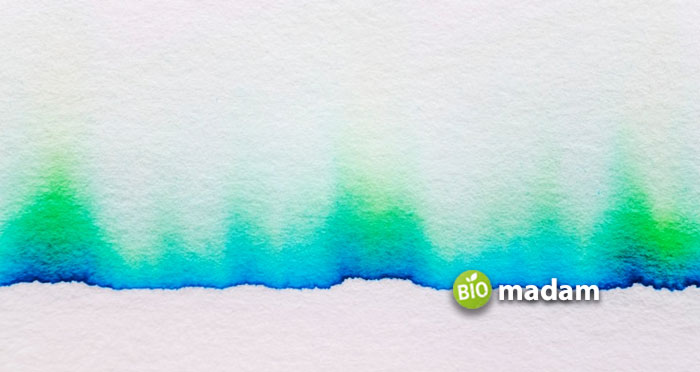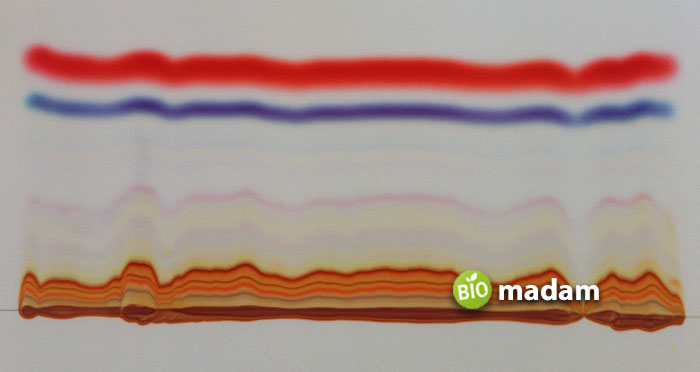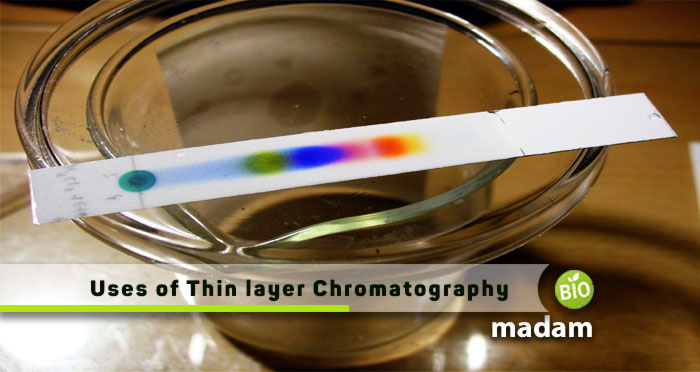Thin-layer chromatography (TLC) is a separation technique for a mixture of non-volatile compounds monitored by their rate of movement on a thin layer of adsorbent coated on a plate or sheet.
We use different types of sheets in TLC, of which the most common are plastic, glass, and aluminum foil. In contrast, the most regular coatings (absorbent materials) used are silica gel, cellulose, and aluminum oxide. TLC technique has its unique advantages and some disadvantages too. The adsorbent layer is a stationary phase, while the mixture is separated as a mobile phase.
Principle of Separation Mixture
The separation principle of TLC lies in different travel rates of the compounds present in the mixture being processed. Also, this difference in the rate of travel of the compounds relies on the attractive forces present between them and the stationary phases (e.g., silica gel, aluminum oxide, and cellulose).
During the separation process, a competition runs between the solute being separated and the mobile phase used in the separation process for the binding sites present in the stationary phase. Let us illustrate this with the following example.
We are taking normal-phase silica gel as an example for the stationary phase. Since this gel is a polar substance, we will describe the separating mixture containing a polar compound.
Therefore, when the sample mixture moves along with the mobile phase (also known as eluent), the polar compound in the sample would be strongly attracted to the stationary phase, thus letting it bind to it firmer.
Whether one works as a biologist, chemist, or biochemist, he often comes across a mixture separated into its constituent compounds. Now there are two ways to do that. One is to undergo chemical assays, which are in their very essence, often hectic and painful.
While on the other hand, one can conveniently opt for thin-layer chromatography, which helps separate the compounds and aids in their identification. Now, if you’re interested in knowing the clinical significance and applications of thin layer chromatography with appropriate examples, keep reading below!
Compound Detection
The extraction of numerous compounds from various source origins is a common and early step of most experimental procedures, resulting in a mixture of compounds. This mixture can then serve as a starting point for the downstream analyses.
Most often, the primary aim of the extraction is to identify a compound of interest. It is possible only if a standard is already available. This standard is usually a pure form of the compound of interest that we identify in the mixture. But, in the absence of the standards, experts utilize de novo identification using some advanced protocols depending on the nature of the compound under investigation.
Let us look at the identification of phytoestrogen from a plant extract. Now the purpose of the experimental design would be to see if some plant contains phytoestrogens or not. The initial steps usually involve extracting preparation.
Then, we perform a TLC analysis to see whether this extract contains the compound of interest, i.e., phytoestrogen, running pure phytoestrogen as standard. We are identifying the same compounds from different origins.
Like compound detection, thin-layer chromatography can also identify a compound by running samples from different sources. In this case, Rf values come out as identical values (compounds moved to the same distance) would indicate the presence of identical compounds (see figure 1).

Figure 1. Graphical representation of TLC explaining the identification of the same compound from different samples. The black band at the leftmost position shows the standard while the other two bands on the right show compound moved to the standard position from different samples. The blue line at the bottom represents a hypothetical starting point where the mixture is applied in the experiment.
Identifying the Number of Compounds
We extensively use thin-layer chromatography to determine the number of compounds present in a mixture. For this purpose, a sample is required to calculate the number of spots or bands appearing. Let’s better comprehend it by looking at figure 2.

Figure 2. A TLC’s graphical representation shows how the number of compounds present in a mixture can be calculated using TLC. For example, the TLC plate contains three spots in the figure, so we conclude that the sample analyzed contained three different compounds.
Reactions’ monitoring via TLC
There are many experimental scenarios in which an experimenter wants to determine the rates of reactions and thereby monitor the underlying progress of the reactions. It is easily held by doing the TLC of the reaction samples at different time points and monitoring the reactants’ conversion to products.
We can further monitor it in two ways:
- To see the appearance of the products on the TLC plate with the passage of time; or
- To observe the disappearance of the reactance (most preferably one of the reactants) with passing time.
This data is then recorded with time and compared to determine the rates of reactions.
Determining a Mixture’s or Compound’s Purity
Thin-layer chromatography is also used to determine the purity of a compound or a mixture of different compounds (for which the components are known.) That is why we find numerous applications of thin-layer chromatography in food analysis.
For example, suppose some perform purification experiments for a compound of interest and want to determine at the end of the purification experiments whether they got the purified product or not. In that case, TLC can be performed with a standard run-along. The appearance of a single spot is key to successful purification.
On the other hand, if someone prepares a mixture of some compounds and wants to confirm that it contains only the components that they have mixed and no impurities, a TLC result showing the number of spots following the number of compounds mixed is a confirmative indication of no impurities and vice versa.
Monitoring Column Chromatography Separations
Column chromatography is another technique used most often to separate and purify a compound of interest by the experimenters. In this technique, different samples being purified fractions are collected, which are later analyzed to see which fractions contain the desired product. One way for this analysis as well as monitoring of the column chromatography fractions is via TLC.

Jeannie has achieved her Master’s degree in science and technology and is further pursuing a Ph.D. She desires to provide you the validated knowledge about science, technology, and the environment through writing articles.

